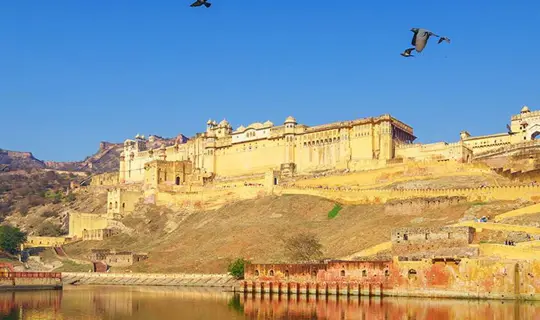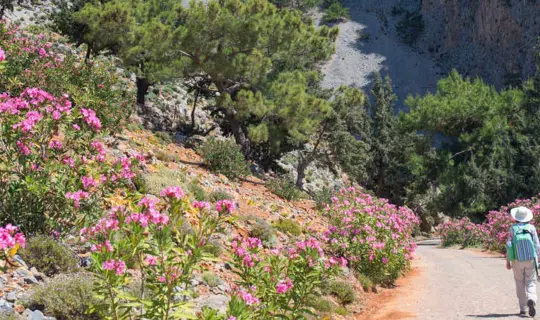Discover 10 reasons why you need to visit this sun soaked Adriatic paradise. From dreamy days spent sailing on clear lakes to lazing on unspoiled beaches.
1. CROATIA DAZZLING BLUE-FLAG BEACHES
Lapped by glittering Adriatic waters, it’s impossible not to be seduced by Croatia’s pebbly and sandy beaches - more than 100 of which have earned Blue Flag status for their sheer loveliness. And while you’ll find plenty of drop-dead-gorgeous spots across the country’s 2,000 kilometres of sparkling coastline, it’s Bol’s much-photographed Zlatni Rat - a silvery tongue of shingle that resembles a shark’s fin and stretches into the turquoise-tinted sea - that gets all of the love from serious sun-worshippers.
2. AMAZING DIVING & SNORKELLING
Whether you’re a seasoned diver or an absolute beginner, Croatia has no shortage of places to plunge into the deep (with zero sharks). There’s also a wealth of fantastic shipwrecks worth grabbing your snorkel for, including Dubrovnik’s wreck of the transport ship, Taranto, that sank in 1943 and Hvar’s remains of the English merchant vessel, Paulina, that met its end in the 1800s. Colourful fish are in abundance - you may even get lucky and enjoy close-up encounters with friendly bottlenose dolphins.
3. SAILING ON CRYSTAL CLEAR WATERS
Given that Croatia has a total of 1,244 islands and islets (48 of which are inhabited), the yachting and boating are both top-notch. For those keen to bob around on sun-kissed shores and past hidden coves, chic towns, and secluded beaches, setting sail for the glitzy port town of Hvar and the magical island of Brac rewards with dreamy vistas. Another fabulous stop is Pag, an island celebrated for its sleepy fishing villages and long-standing traditions of cheese and lace making.
4. TOURING MEDIEVAL DUBROVNIK
The walled city of Dubrovnik may have taken a civil war battering, but it takes some beating when it comes to ancient ramparts, elegant Baroque architecture, terracotta rooftops, and curious monuments. Head to this so-called Pearl of the Adriatic to explore the UNESCO-listed Old Town, marvel at the Rector’s Palace, and visit the Franciscan Monastery with its pharmacy that’s been operating since 1391. Also take the cable car to Srđ Hill for ravishing views over the city and the glistening sea.
5. VISITING LOVELY SPLIT
While its palm-lined Riva waterfront, grand museums, and fabulous markets make the coastal city of Split a real crowd-pleaser, it’s the higgledy-piggledy UNESCO-listed Diocletian’s Palace that steals the show. Built as a retirement home for Roman Emperor Diocletian at the turn of the 4th century, it has plenty to amaze; ancient columns, underground cellars, and dozens of bars, restaurants, and shops hidden within atmospheric walls. Further must-sees include St. Domnius Cathedral, the Archaeological Museum, and the 123-metre-high Marjan Hill.
6. HITTING THE STREETS OF ZAGREB
A world away from the Adriatic’s sun-soaked islands, Istria’s pedestrian-friendly town of Zagreb was made for walking. Stroll around the cobblestone streets of Gornji Grad (Upper Town) for Viennese-style palaces and the iconic 13th century Church of St Mark and visit Donji Grad (Lower Town) for its grandiose neo-Baroque and Art Deco buildings, spacious parks, and tree-lined avenues. There’s also a slew of outdoor cafés (the locals take coffee very seriously) as well as ample museums for history buffs and art lovers.
7. EXPLORING PLITVICE LAKES NATIONAL PARK
Of Croatia’s eight national parks, it’s the UNESCO-listed Plitvice Lakes that ranks as the oldest (it was established in 1949) and the best-looking. Head to this wildlife-rich wonderland to gaze at the 16 criss-crossing crystalline lakes laced together by tumbling waterfalls and cascades and then explore the limestone canyons, numerous caves, elevated wooden walkways and bridges, and extensive forest trails. Also keep your eyes peeled for brown bears, lynx, wolves, deer, and 157 species of bird.
8. ADMIRING PULA’S ROMAN AMPHITHEATRE
One of the loveliest coastal towns on the Istrian peninsula, Pula is most famous for its Roman amphitheatre - one of the best preserved and largest in the world. Built between 27BC and 68AD and then extended by Emperor Vespasian in 79AD for gladiatorial contests, it awes with limestone seats (it could hold up to 20,000 spectaculars in Roman times) as well as underground passageways. Nowadays, it hosts numerous concerts and events, including the Pula Film Festival every July.
9. LISTENING TO ZADAR'S SEA ORGAN
It’s all about haunting melodies using the movements of the sea at the unique Sea Organ, a rather unusual, 230-foot long art installation turned musical instrument on the shores of Zadar. Designed by local architect Nikola Bašić and opened in 2005, what looks like large steps leading into the Adriatic Sea has cleverly constructed subterranean organ pipes - all of which are tuned to different musical chords and rely solely on the wind and the waves for sound.
10. ENJOYING WINE TOURS & TASTINGS
Croatia’s wine scene has never been more vibrant; there’s over 800 wineries and almost 20,000 registered wine makers. The rich and flavoursome Plavac Mali is the country’s best-known red wine (it grows mostly along the Dalmatian coast), but there’s also some jolly decent whites too, including Pošip and Grk from Korcula, Vugava from Vis, and Žlahtina from Krk. If you fancy a tipple, the family-owned Sladić Winery on the border of Krka National Park does behind-the-scene tours and superb cellar wine tastings.










